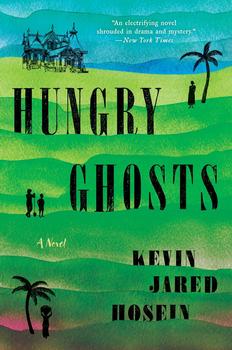Summary | Excerpt | Reading Guide | Reviews | Beyond the book | Read-Alikes | Genres & Themes | Author Bio

Tiphanie Yanique's bold debut novel Land of Love and Drowning does for the Virgin Islands what Gabriel Garcia Marquez's One Hundred Years of Solitude did for Colombia: it captures its spirit, delivers the soul of the place into being. Yanique's intimate storytelling comes from personal experience: she grew up on the islands and draws from her family history for some of the plot elements. Suffused with rich imagery, Land of Love and Drowning is a fantasy of character, place and history. Steeped in the rich tradition of Caribbean and South American storytelling, it is also a brilliant evocation of magical realism.
Yanique's novel spans the 20th century, telling both the story of three generations of the fated Bradshaw family as well as the saga of United States Virgin Islands history (see Beyond the Book). At the start of the novel, the Bradshaws are wealthy and connected, living in the Frenchtown district. The Islands, bought by the U.S. in 1917, slowly get taken over by the Americans, and the Bradshaws' fortunes begin to decline.
The young Bradshaw sisters Eeona and Anette have their lives sheared off from a secure course when they are orphaned. The siblings are left struggling, but the change is hardest on Eeona, who not only misses her parents but the life their money afforded her. Anette, a red-headed firebrand, charts her own path, spurning her sister's entreaties to act more like a lady. She embraces the opportunity of becoming a history teacher. The sisters represent the past and the future of the Virgin Islands, with Eeona grasping desperately to a genteel, privileged life behind her and Anette grabbing the future. Neither has easy roads to traverse. Though the novel also explores the lives of the sister's parents and Anette's children, the majority of the story is about the two siblings and their search for understanding — of themselves and of each other.
As the girls grow older, the benefit of the Americanization of the island becomes difficult to discern. As officers in the army, Anette's boyfriends experience racism for the first time, presenting the idea of racial stratification to an island traditionally classified by wealth. This new concept is felt by the fashionable women, who, not wanting to be considered "black," sit in the shade to keep their skin from darkening further in the sun. To make the distinctions between white Americans and black islanders more stark, wealthy Americans buy sections of beachfront and close it to the public. The notion of the island belonging to the people who live there is pushed aside in the name of private property laws. The final scenes suggest that the true heart of the islands can only be found in its most remote locations. American culture and tourism have unmoored most of the land from the native way of life.
While the novel explores the impact of the islands' history on the Bradshaw family, the story is not pure historical fiction. Yanique's incorporation of magical realism and her ability to tie the Virgin Islands' mythical tales into her narrative, creates fantastical imagery that build mood and atmosphere. The sensory descriptions and the characters' deep sense of place cement the vibrant scenes for the reader, but the addition of magical realism elements — one character has a cleft foot, another has beauty more radiant than a mermaid — transforms the narrative from passive writing into animated storytelling. We hear as well as see the characters' stories. The effect is transcendent.
Yanique's brilliant storytelling, her artful intertwining of history and folklore into the lives of her dynamic characters, is an artistic feat. Land of Love and Drowning is destined to be a classic.
![]() This review was originally published in The BookBrowse Review in August 2014, and has been updated for the
September 2015 edition.
Click here to go to this issue.
This review was originally published in The BookBrowse Review in August 2014, and has been updated for the
September 2015 edition.
Click here to go to this issue.

If you liked Land of Love and Drowning, try these:

by Kevin Jared Hosein
Published 2024
From an unforgettable new voice in Caribbean literature, a sweeping story of two families colliding in 1940s Trinidad - and a chilling mystery that shows how interconnected their lives truly are.

by Yangsze Choo
Published 2020
A sweeping historical novel about a dance-hall girl and an orphan boy whose fates entangle over an old Chinese superstition about men who turn into tigers, set in 1930s Malaysia.
Your guide toexceptional books
BookBrowse seeks out and recommends the best in contemporary fiction and nonfiction—books that not only engage and entertain but also deepen our understanding of ourselves and the world around us.